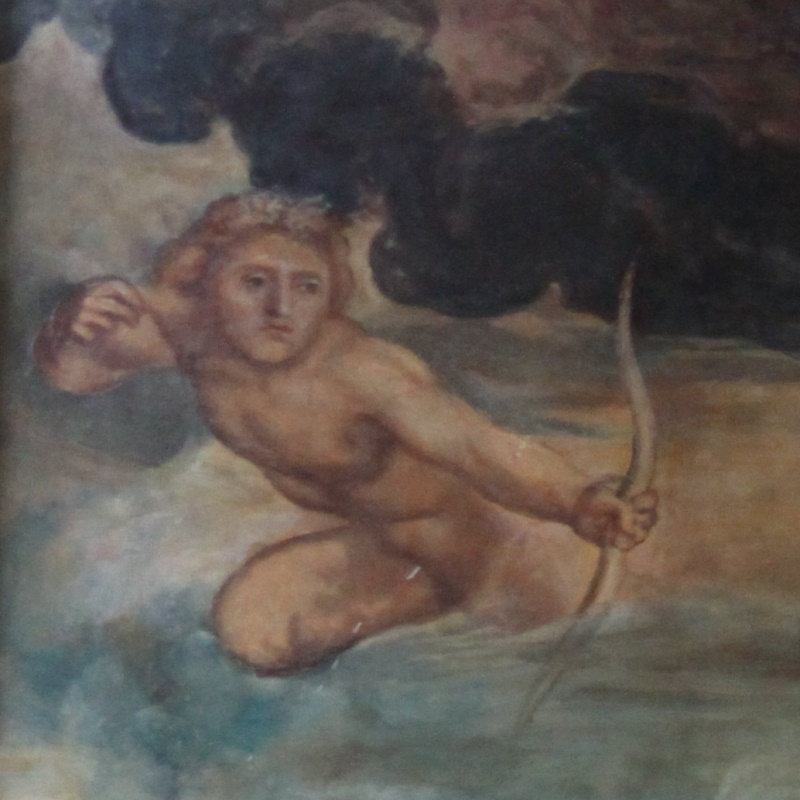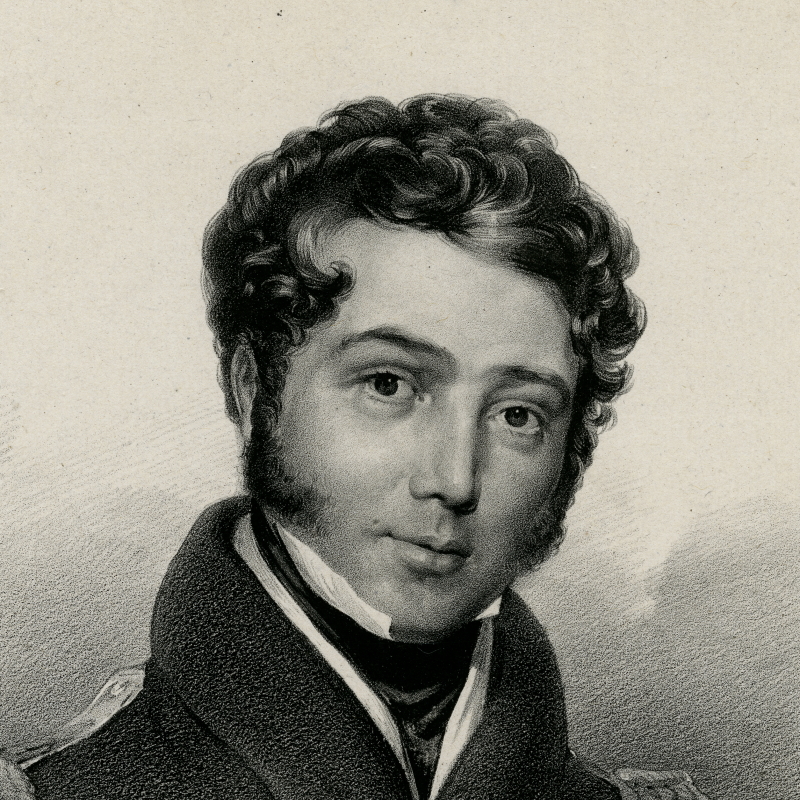Royal Society Archivist Virginia Mills and Malcolm Smith of Lincoln’s Heslam Trust reveal the story behind a bronze figure of George Boole FRS, cast especially for the Society.
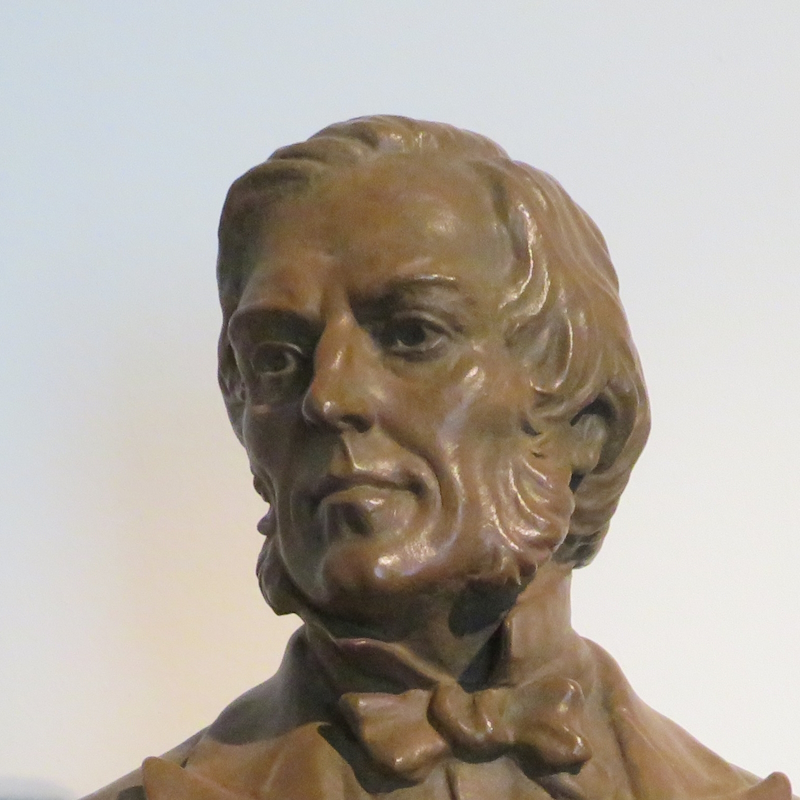
A few weeks ago I was excited to take delivery of a generous gift to the Royal Society.
We regularly accession material into the archive relating to both past and present Fellows, but this time the addition to the collection was not the usual papers or digital files but a bronze figure cast especially for the Society. In this post, the donor of the statue, Malcolm Smith of Lincoln’s Heslam Trust, tells us about the larger memorial that engendered the Society’s newest statue, and its subject: fellow son of Lincoln George Boole FRS (1815-1864).
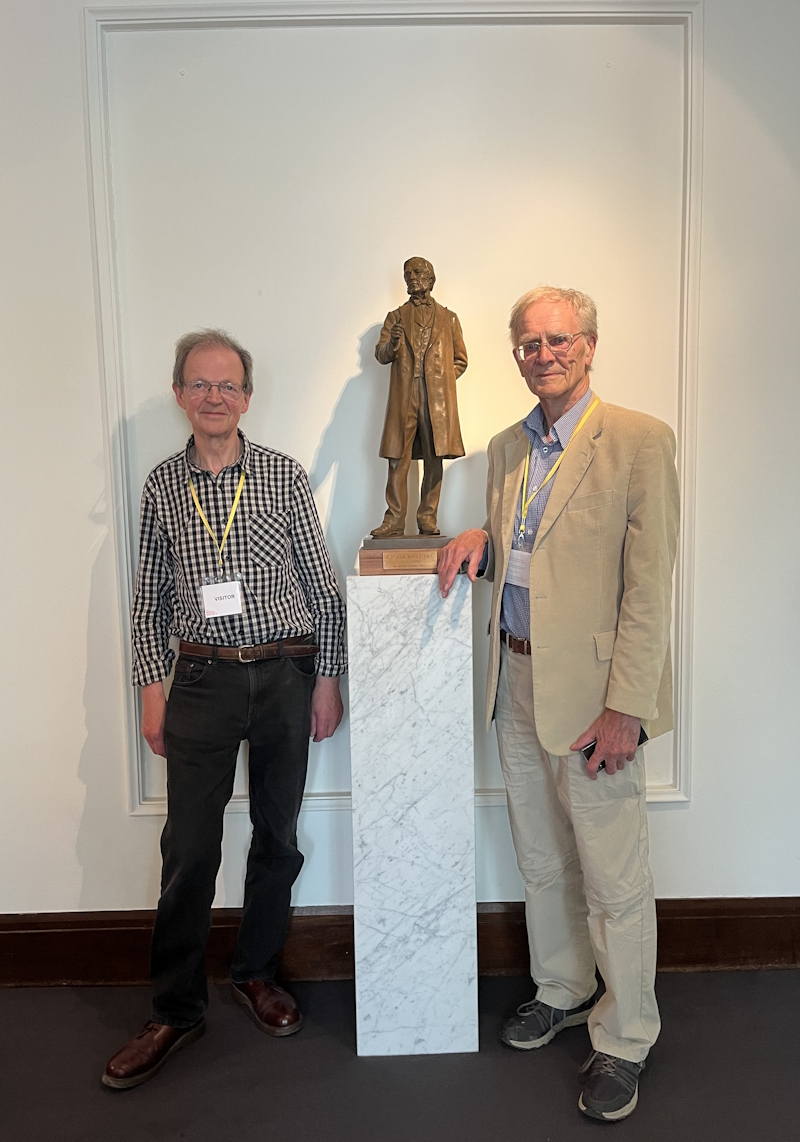 George Boole FRS by Antony Dufort FRSS (left), donated to the Royal Society by Malcolm Smith (right)
George Boole FRS by Antony Dufort FRSS (left), donated to the Royal Society by Malcolm Smith (right)
George Boole – a famous son of Lincoln
(Malcolm Smith writes): George Boole was highly regarded as a mathematician in his time and honoured as a Fellow of the Royal Society in 1857. The genius of his work to create Boolean logic has influenced our modern world in ways he could never have imagined. It is the foundation for all the digital devices we now use every day. The phone in your pocket, the laptop on your desk and the TV in your living room are all making millions of decisions every second using George Boole’s logic to create the magic you see on the screen.
Boole was largely self-educated and never attended university as a student, but his potential genius was recognised and attracted local patrons to support his education and his development as a mathematician. In 1834, at the age of 19, he opened his first school in Lincoln and in 1840 a Boarding School at the top of Lindum Hill.
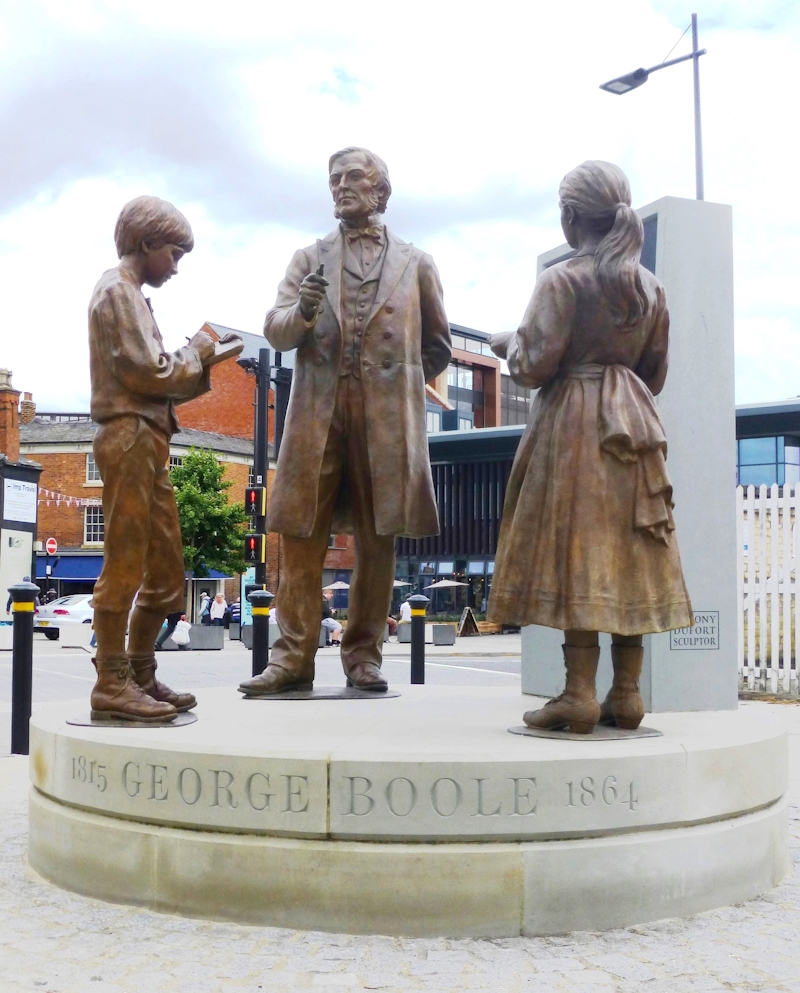 George Boole Memorial, Lincoln (sculptor, Antony Dufort FRSS)
George Boole Memorial, Lincoln (sculptor, Antony Dufort FRSS)
The Heslam Trust memorial to Boole
A sculpture of Boole was commissioned by the Heslam Trust as a gift to the City of Lincoln and erected in 2022 outside Lincoln Railway Station, commemorating the mathematician and teacher who was born in the family house on Silver Street in 1815. In 1847 Boole wrote and published his first work on the mathematical analysis of logic. A year later in 1848, the railway station opened. Boole would have used the station for his travels and may have walked over the same spot where his statue now stands.
He lived and worked as a teacher in the city for 34 years until being appointed the first Professor of Mathematics at the new University of Cork in 1849. He returned frequently to Lincoln, a city he loved, and died in Cork in 1864.
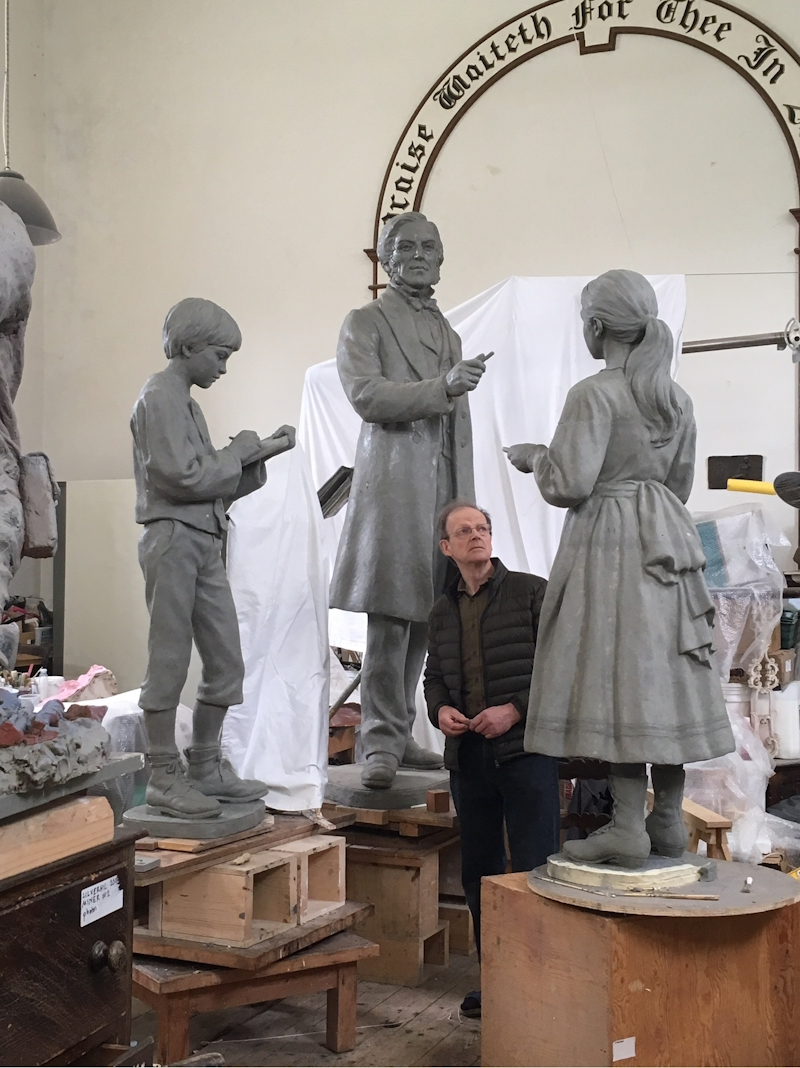 Sculptor Antony Dufort FRSS in his studio
Sculptor Antony Dufort FRSS in his studio
Designing the sculpture
The sculpture was created by artist Antony Dufort FRSS to represent much more than just the likeness of Boole himself. It includes three figures: Boole is depicted as a teacher standing at a blackboard, chalk in hand, with two of his pupils – a young boy and girl who stand attentively making notes with a stylus on their Victorian slates. Behind his back Boole holds a slim volume with the word Logic on the spine.
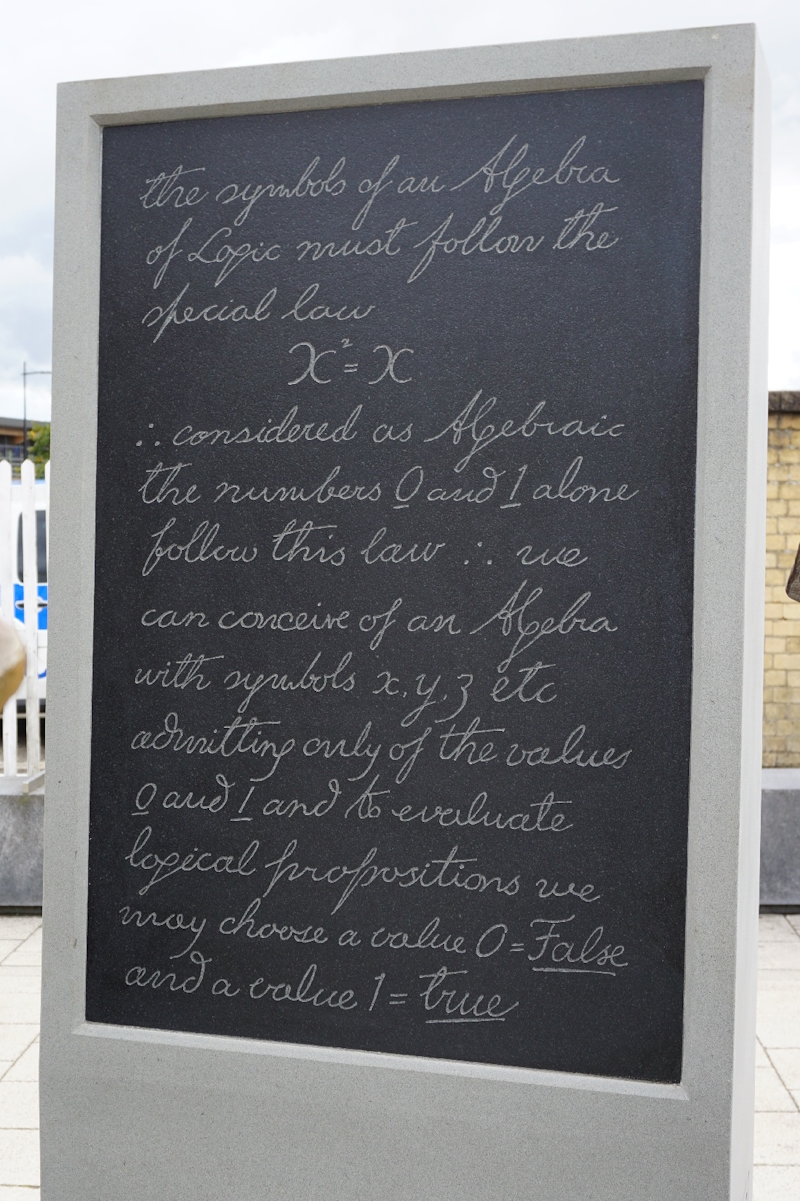 Sculptor, Antony Dufort FRSS
Sculptor, Antony Dufort FRSS
Boolean logic
On the blackboard Boole has written a short script explaining one of his important propositions on the mathematical form for an algebra of logic: the law that X2 = X, and the fact that such a law, if interpreted as numerical, is only true for the numbers 0 and 1. The use of the binary form with only 0 and 1 representing False and True, together with the manipulation by Boolean Logic with his AND, OR and NOT operators, became the foundation for all the technology of our digital devices. With the help of the Royal Society we obtained the original, handwritten script for Boole’s book, and the blackboard text is therefore in Boole’s hand with words he himself might have chosen to use.
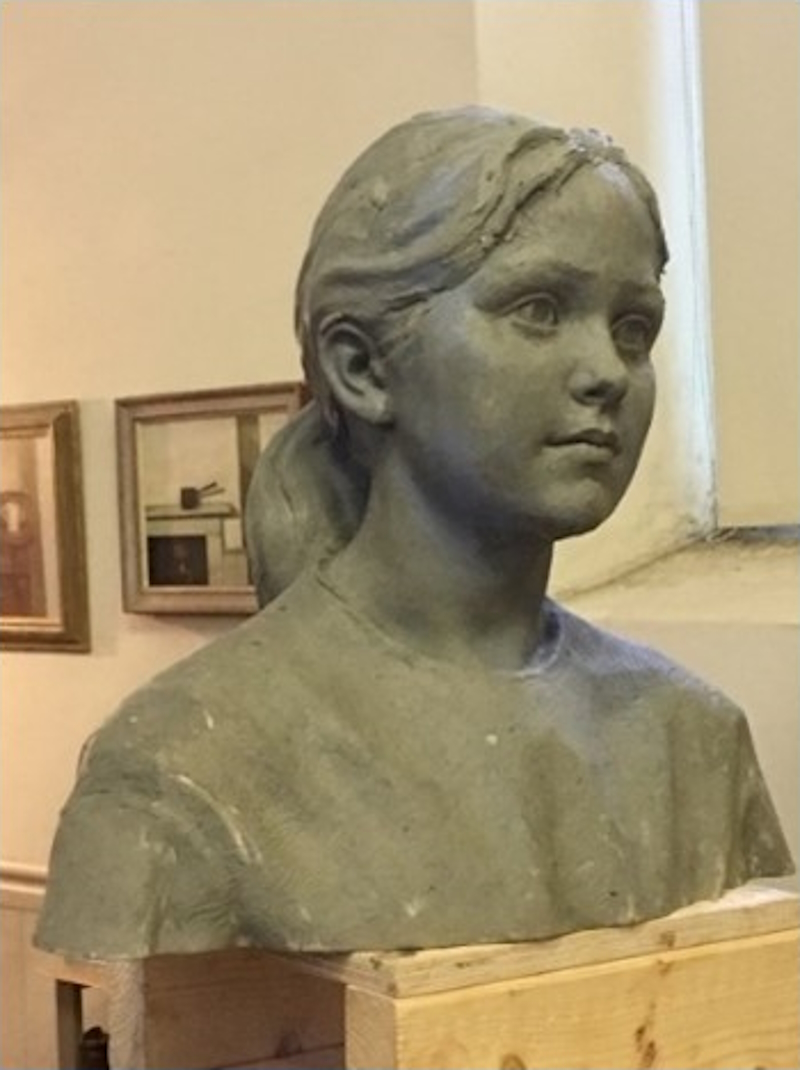 The head of the young girl is modelled on Boole’s daughter, Alicia, born in 1860 (sculptor, Antony Dufort FRSS)
The head of the young girl is modelled on Boole’s daughter, Alicia, born in 1860 (sculptor, Antony Dufort FRSS)
The three figures
The Boole figure was derived from early drawings of Boole and a photograph which shows him as a somewhat serious, unsmiling figure. This would be largely due to the fact that Victorian photographs required the subject to remain very still for a sitting of several minutes, and the artist has therefore given him more of a genial smile.
The children are depicted in dress typical of the period. The boy is modelled on the young son of the artist and the features of the girl are taken from one of Boole’s three daughters – Alicia Boole, born in 1860. The inclusion of both a boy and a girl is intentional and indicates that Boole was not typical of many Victorian gentlemen but believed in the encouragement of girls to be well educated. Alicia Boole became a recognised mathematician in her own right, and her sisters Lucy and Ethel became a chemist and a novelist respectively.
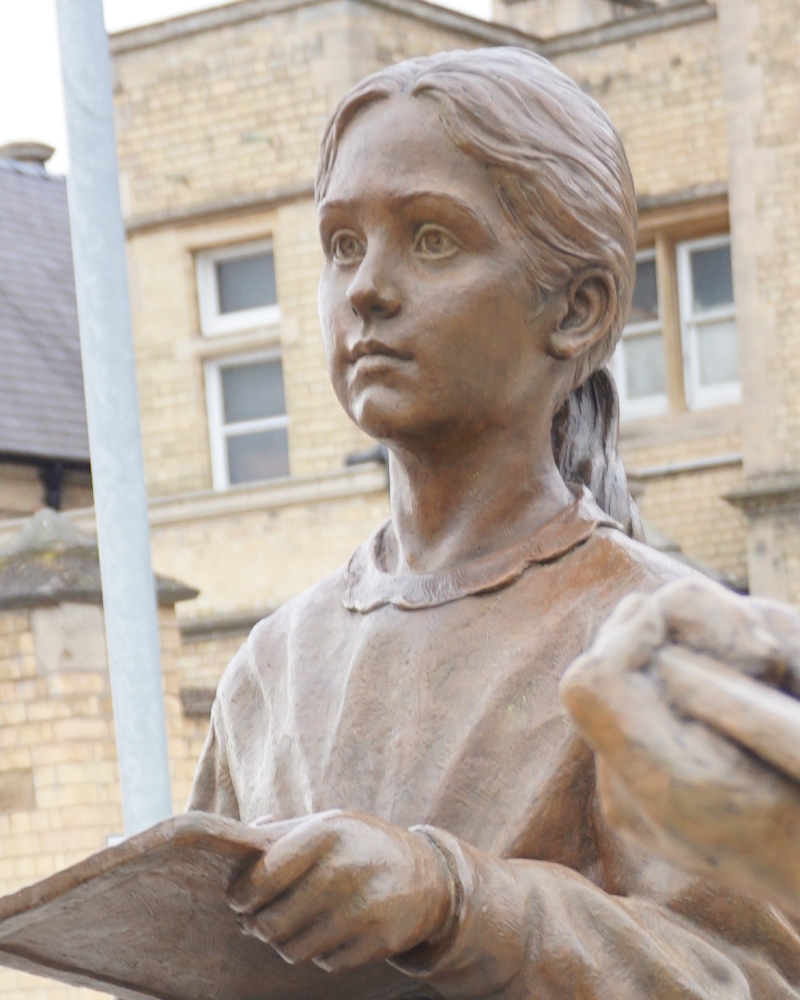 Sculptor, Antony Dufort FRSS
Sculptor, Antony Dufort FRSS
An image of the past – but a vision of the future
The objects the children are holding are the slate and stylus typical of a Victorian classroom – but the intriguing thought is that if we change the dress of the three figures, the blackboard for a large, digital touch-screen display and the slates for a tablet computer, the scene might be that of a modern classroom.
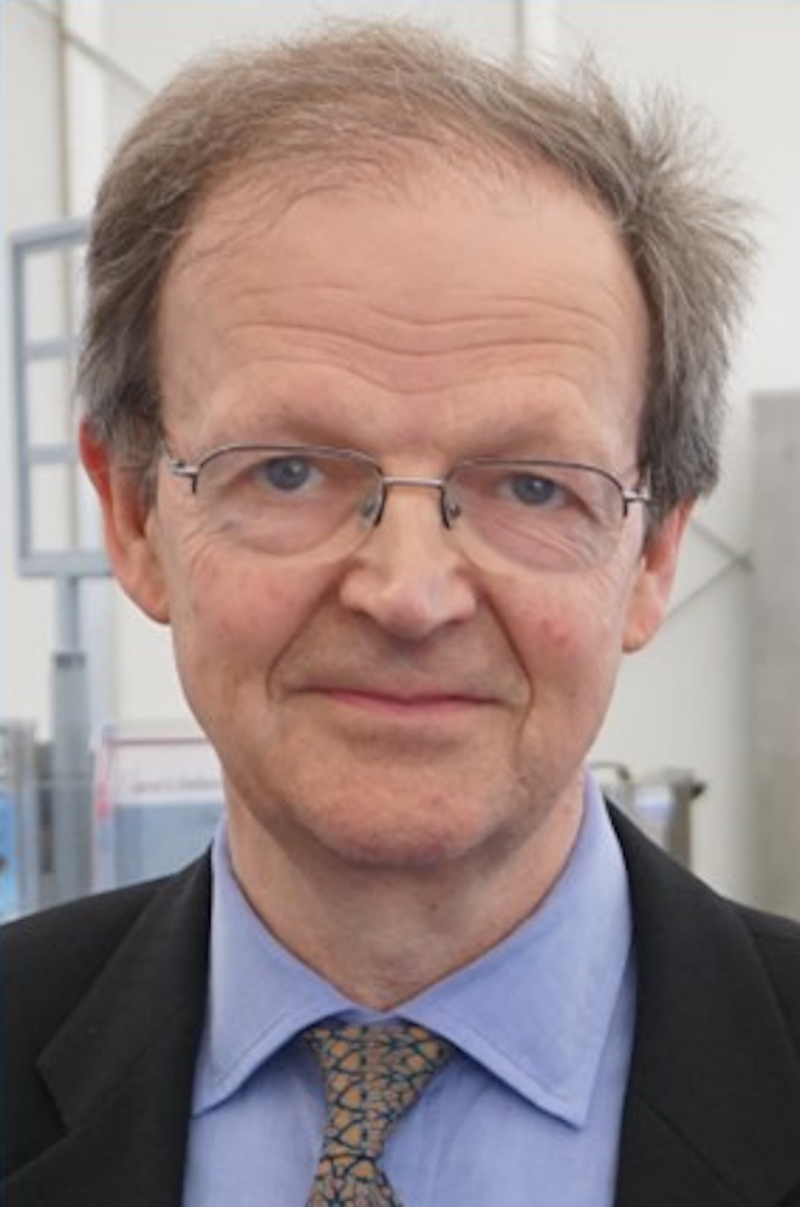
The sculptor: Antony Dufort FRSS
Antony Dufort FRSS, SPS, MA is a highly acclaimed sculptor with many significant works on display around the UK. He won the competition to design the reverse of the new definitive £2 circulation coin issued in July 2015, and has completed many portrait sculptures of well-known figures including the late Queen, Elizabeth II, Pope John Paul II, Tudor monarchs, Margaret Thatcher and David Cameron. His highly valued work can be viewed on his website.
The gift to the Royal Society
(Virginia Mills writes): It was through the request for examples of George Boole’s handwritten work that the Royal Society archive first came into contact with Malcolm and learned about the memorial to George Boole. We hold the original manuscript and notes of many of his works, including The Laws of Thought (1854). I could not be more surprised or delighted that this resulted in the donation of a scaled down figure of George Boole based on the memorial in Lincoln. It is a great addition to our collection of portraits of Fellows, where George Boole was sadly unrepresented before this valuable gift.
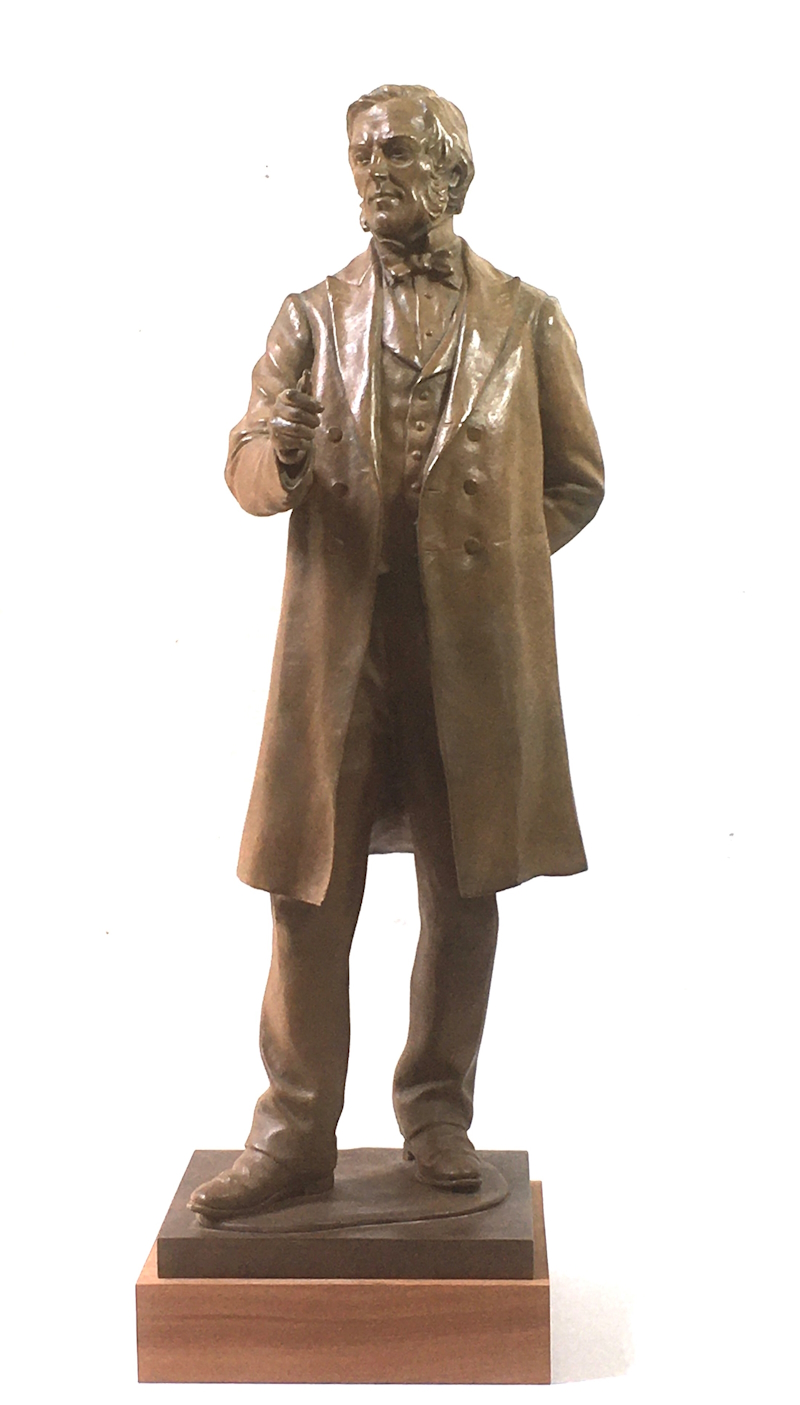 Sculptor, Antony Dufort FRSS
Sculptor, Antony Dufort FRSS




